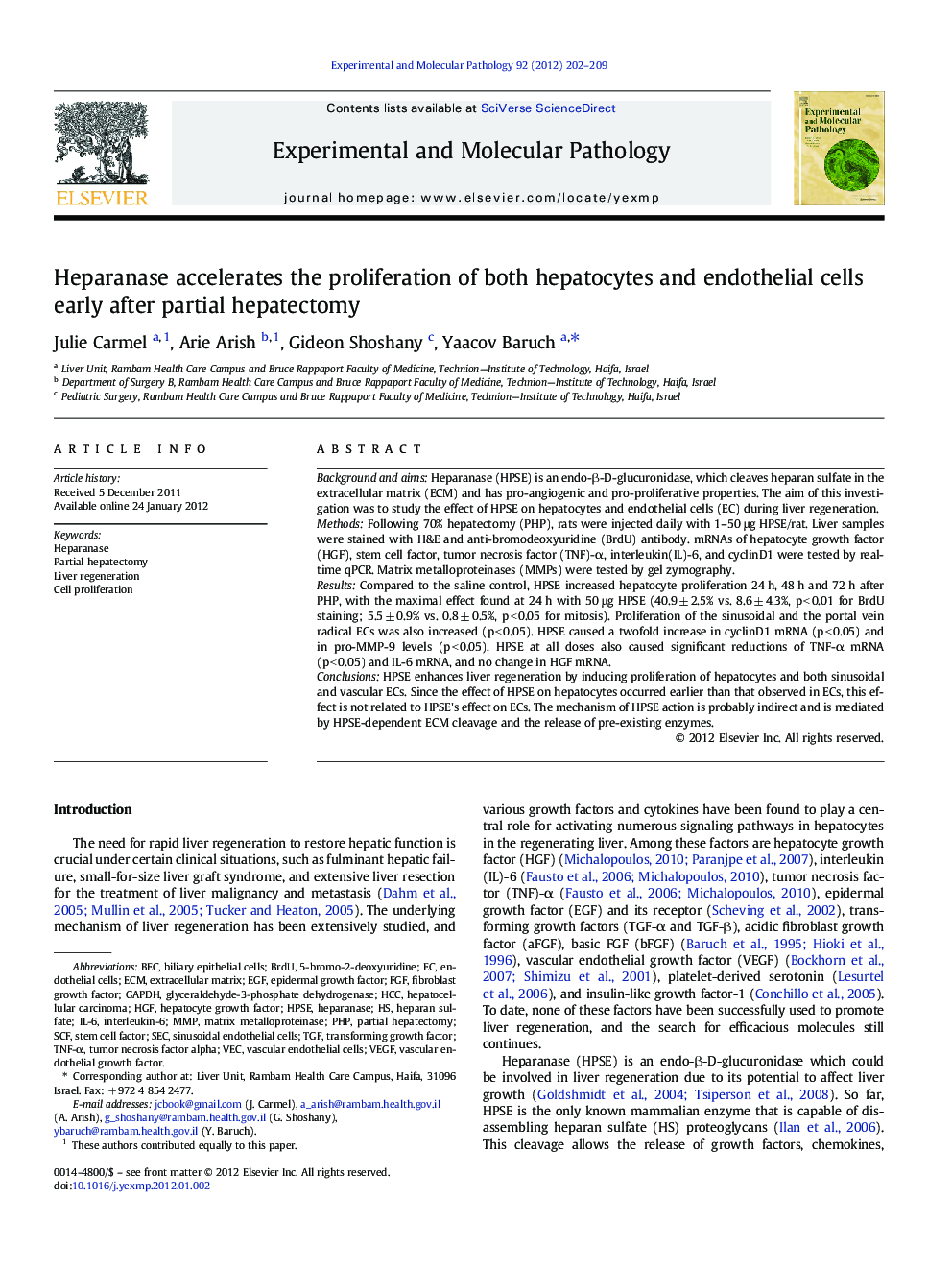| Article ID | Journal | Published Year | Pages | File Type |
|---|---|---|---|---|
| 2775155 | Experimental and Molecular Pathology | 2012 | 8 Pages |
Background and aimsHeparanase (HPSE) is an endo-β-D-glucuronidase, which cleaves heparan sulfate in the extracellular matrix (ECM) and has pro-angiogenic and pro-proliferative properties. The aim of this investigation was to study the effect of HPSE on hepatocytes and endothelial cells (EC) during liver regeneration.MethodsFollowing 70% hepatectomy (PHP), rats were injected daily with 1–50 μg HPSE/rat. Liver samples were stained with H&E and anti-bromodeoxyuridine (BrdU) antibody. mRNAs of hepatocyte growth factor (HGF), stem cell factor, tumor necrosis factor (TNF)-α, interleukin(IL)-6, and cyclinD1 were tested by real-time qPCR. Matrix metalloproteinases (MMPs) were tested by gel zymography.ResultsCompared to the saline control, HPSE increased hepatocyte proliferation 24 h, 48 h and 72 h after PHP, with the maximal effect found at 24 h with 50 μg HPSE (40.9 ± 2.5% vs. 8.6 ± 4.3%, p < 0.01 for BrdU staining; 5.5 ± 0.9% vs. 0.8 ± 0.5%, p < 0.05 for mitosis). Proliferation of the sinusoidal and the portal vein radical ECs was also increased (p < 0.05). HPSE caused a twofold increase in cyclinD1 mRNA (p < 0.05) and in pro-MMP-9 levels (p < 0.05). HPSE at all doses also caused significant reductions of TNF-α mRNA (p < 0.05) and IL-6 mRNA, and no change in HGF mRNA.ConclusionsHPSE enhances liver regeneration by inducing proliferation of hepatocytes and both sinusoidal and vascular ECs. Since the effect of HPSE on hepatocytes occurred earlier than that observed in ECs, this effect is not related to HPSE's effect on ECs. The mechanism of HPSE action is probably indirect and is mediated by HPSE-dependent ECM cleavage and the release of pre-existing enzymes.
